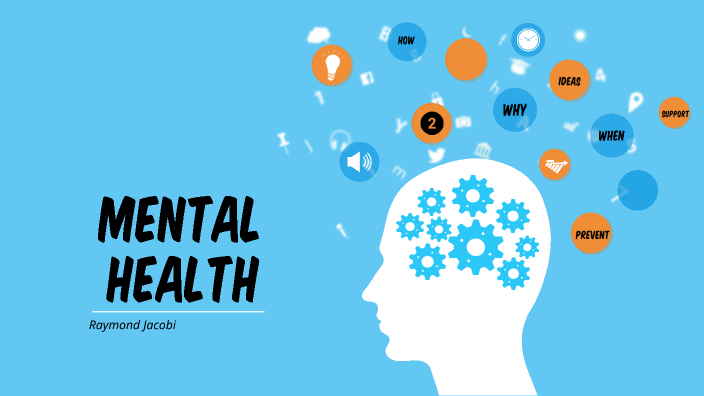Improving Mental Health Literacy Through Education

Table of Contents
Understanding the Components of Mental Health Literacy
Effective mental health education requires a multifaceted approach that encompasses several key components:
Recognizing Mental Health Conditions
Understanding common mental health conditions is the first step towards improved mental health literacy. These conditions, while distinct, often share overlapping symptoms. It's vital to remember that professional diagnosis is crucial for accurate identification and treatment.
-
Key symptoms of common conditions:
- Anxiety: Excessive worry, nervousness, restlessness, difficulty concentrating, physical symptoms (e.g., rapid heartbeat, sweating).
- Depression: Persistent sadness, loss of interest in activities, changes in appetite or sleep, fatigue, feelings of worthlessness or guilt.
- Stress: Feelings of being overwhelmed, difficulty managing demands, physical tension, irritability.
-
Different types of anxiety and depression: It’s important to understand that anxiety and depression manifest in various forms, including generalized anxiety disorder, panic disorder, social anxiety disorder, major depressive disorder, persistent depressive disorder (dysthymia), and others.
-
Seeking professional diagnosis: Self-diagnosis can be inaccurate and potentially harmful. Always consult a mental health professional for an accurate assessment and treatment plan. Reliable resources for further information include the National Institute of Mental Health (NIMH) and the World Health Organization (WHO).
Identifying Risk Factors and Protective Factors
Knowing the factors that contribute to mental health challenges and those that promote resilience is fundamental to mental health literacy.
-
Examples of risk factors: Genetics, traumatic experiences, chronic stress, substance abuse, lack of social support, adverse childhood experiences (ACEs).
-
Examples of protective factors: Strong social support networks, effective coping skills, positive self-esteem, access to mental health services, resilience, a sense of purpose and meaning in life, strong problem-solving abilities.
Understanding Help-Seeking and Treatment Options
Knowing where to turn for help is vital. Mental health education should equip individuals with the knowledge to access appropriate resources and support systems.
-
Different types of mental health professionals: Therapists, psychiatrists, counselors, psychologists, social workers.
-
Various treatment options: Psychotherapy (talk therapy), medication (antidepressants, anti-anxiety medication), support groups, lifestyle changes (exercise, healthy diet, mindfulness).
-
Relevant helplines and online resources: (Include links to reputable helplines and online resources specific to your target audience's location). Examples could include the Crisis Text Line, The National Suicide Prevention Lifeline, or similar organizations.
Implementing Effective Mental Health Education Programs
Successful mental health literacy initiatives require carefully planned and implemented programs tailored to different audiences.
Targeting Different Age Groups
Age-appropriate mental health education is critical. Children, adolescents, and adults require different approaches to information delivery and content.
- Examples of programs for schools: Incorporate mental health into existing curricula, such as health classes, social studies, or even through school-based counseling services.
- Examples of programs for workplaces: Offer workshops, training sessions, and employee assistance programs (EAPs) to promote mental wellness and reduce stigma.
- Examples of programs for community centers: Host workshops and support groups on stress management, coping skills, and other relevant topics. Utilize diverse teaching methodologies – interactive workshops, online courses, and public awareness campaigns.
Addressing Stigma and Promoting Help-Seeking Behavior
Reducing stigma surrounding mental health is crucial for encouraging help-seeking behavior.
-
Positive storytelling and media representation: Showcase positive stories of individuals who have successfully navigated mental health challenges. Promote accurate and sensitive portrayals of mental illness in media.
-
Creating safe and supportive environments: Foster open conversations about mental health within families, schools, and workplaces. Provide training to staff and educators on how to support individuals struggling with mental health issues.
Integrating Mental Health Literacy into Existing Curricula
Integrating mental health education into existing frameworks enhances its effectiveness and reach.
- Examples of integration: Incorporate mental health concepts into health classes, social studies, and even literature classes.
- Teacher training and professional development: Provide teachers and educators with the necessary training and resources to effectively deliver mental health education.
Measuring the Impact of Mental Health Literacy Initiatives
Evaluating the success of mental health literacy programs is essential for continuous improvement.
Evaluating Program Effectiveness
Rigorous evaluation methods are needed to assess the impact of these programs.
- Evaluation methods: Pre- and post-tests to measure changes in knowledge, surveys to assess attitudes and beliefs, focus groups to gather qualitative data, analysis of helpline calls and mental health service utilization rates.
Tracking Changes in Help-Seeking Behaviors
Monitoring changes in help-seeking behavior provides crucial insights into the effectiveness of mental health literacy initiatives.
- Data analysis: Analyze data from helpline calls, mental health service utilization, and self-reported help-seeking behavior.
Conclusion
Improving mental health literacy through comprehensive education is paramount for promoting individual and community wellbeing. By understanding mental health conditions, identifying risk and protective factors, and accessing available resources, we can create a more supportive and understanding environment. Early intervention, reduced stigma, and increased help-seeking behavior are crucial outcomes of effective mental health education. Invest in improving mental health literacy today. Your actions can make a profound difference in the lives of others and contribute to a healthier, more supportive community. (Include links to relevant resources and organizations here).

Featured Posts
-
 Discover This Country Your Essential Travel Planner
May 03, 2025
Discover This Country Your Essential Travel Planner
May 03, 2025 -
 Christina Aguileras Edited Photos Spark Debate Natural Beauty Vs Airbrushing
May 03, 2025
Christina Aguileras Edited Photos Spark Debate Natural Beauty Vs Airbrushing
May 03, 2025 -
 Energy Policy Reform A Comprehensive Review By Guido Fawkes
May 03, 2025
Energy Policy Reform A Comprehensive Review By Guido Fawkes
May 03, 2025 -
 La Position De Macron Sur La Palestine Une Erreur Selon Netanyahu
May 03, 2025
La Position De Macron Sur La Palestine Une Erreur Selon Netanyahu
May 03, 2025 -
 Joseph Sur Tf 1 Lucien Jean Baptiste Un Columbo A La Francaise Notre Verdict
May 03, 2025
Joseph Sur Tf 1 Lucien Jean Baptiste Un Columbo A La Francaise Notre Verdict
May 03, 2025
Latest Posts
-
 Indias Pm Modi To Discuss Ai And Economy During France Trip
May 03, 2025
Indias Pm Modi To Discuss Ai And Economy During France Trip
May 03, 2025 -
 Visite De Macron Au Dela De La Douleur L Emotion Face Aux Victimes Israeliennes
May 03, 2025
Visite De Macron Au Dela De La Douleur L Emotion Face Aux Victimes Israeliennes
May 03, 2025 -
 Macron Et La Souffrance Des Victimes Israeliennes Une Rencontre Marquante
May 03, 2025
Macron Et La Souffrance Des Victimes Israeliennes Une Rencontre Marquante
May 03, 2025 -
 Reaction Emue D Emmanuel Macron Apres Avoir Rencontre Des Victimes De L Armee Israelienne
May 03, 2025
Reaction Emue D Emmanuel Macron Apres Avoir Rencontre Des Victimes De L Armee Israelienne
May 03, 2025 -
 Emotion De Macron Face Aux Victimes Israeliennes Une Image Rare Devoilee
May 03, 2025
Emotion De Macron Face Aux Victimes Israeliennes Une Image Rare Devoilee
May 03, 2025
